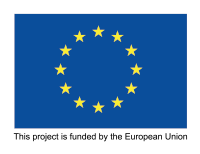
Stray animals as new others: Where we always intersect is our “otherness!”
One of the heavy agendas of 2024 was the amendments to the Law No. 7527 on the “Protection” of Animals. As the amendments came to the agenda, the severe violations against stray animals, especially the right to life, make it necessary for us to rethink the holism of rights. Child safety was cited as the justification for the amendments and public opinion was created on this basis. Ensuring child safety was presented as a ground that legitimized violations and was accepted by the society.
The widespread approach that compares the values, importance or rights of rights subjects and subjects them to a hierarchy, this time creates this comparison between children and street animals. Therefore, in this article, we would like to draw attention to the holism and intersectionality of rights against this approach that seeks to violate another area of rights by citing one area of rights as a reason. For this purpose, we would like to share with you the outputs of the “Stray Animals as New Others” workshop we organized at the 7th Civil Voices Festival.
The workshop was designed to point out and reflect on how the words, discourses and thought patterns that have been used for all others until today are now directed towards animals living on the streets, especially dogs. In this workshop, we discussed the fact that dogs living on the streets today are the new dangerous class, the new other and the new minorities we don't want in our

Who is the other?
Othering feeds violence against groups by devaluing and creating fear. As an ideology, othering focuses on the differences between groups instead of their similarities and portrays these differences as a threat to the social structure/order etc. It is this idea that prevents us from seeing animals living on the streets today as residents of cities who are afraid, sad, happy, bonding, living in difficult conditions for their needs such as shelter and food. When we look historically, we remember that “otherness” is constantly transferred from one group to another and new groups of fear and danger are created. Kurds, transgender people, sex workers, women who wear turbans, Armenians, Alevis, Roma, HIV+ individuals, students, dissidents, emos, Syrians, migrants, the elderly in the pandemic, those with onions in the onion warehouse... the list is long. Today, animals living on the streets!
The issue of public space and the housing crisis
What we are confronted with today over dogs; not wanting them in the neighborhood, on the street and wanting them to be collected and confined to shelters raises the question of who owns the public space. We know that this public space is also closed to trans people, the poor, Roma, the elderly and sex workers. The exclusionary approach that closes public space to “others” feeds hatred. The hatred directed at these groups squeezes them to the city peripheries or to ghettos or depressed areas within the city.
On the other hand, not wanting animals living on the streets means taking away their right to shelter in living spaces already occupied by concrete. On the other hand, housing is increasingly becoming a common problem for everyone. It is not only dogs that are excluded from cities. With impoverishment and rent hikes, we are all becoming unable to live in our old living spaces. Similarly, students have been experiencing a housing crisis for a long time.
When we look at child safety, which is the reason for the law, through public space, another contradiction emerges. In cities where services, transportation and spaces are designed as if children do not exist, it is almost impossible for children to exist in public space. When we add the demands for child-free airspace to this, it becomes even more contradictory.
At this point, we need to ask, whose public space is this public space that we cannot inhabit and is closed to all others?
A strange property relationship and denial of responsibility
A strange dilemma we encounter with animals is the distinction between owned and unowned. The phrase “take them home and feed them” that we encounter when we defend the rights of animals living on the streets requires a close look at the relationship of ownership and the denial of responsibility. The distinction legitimizes the violence, rounding up, exile and confinement of the unclaimed animal, while deeming the “owned” animal more valuable than the other.
We see the propertyist distinction that legitimizes this violence in similar dynamics in the relations between parents and children, men and women. The forms of violence to which children are subjected in the household are a manifestation of this property relationship. This property relationship also lies at the root of the violence women are subjected to in male-female relationships. It is critical for a safe life to liberate each living being from the property relationship that breeds and feeds violence, and to think free.
In short, a just life for all can only be possible by defending the existence and rights of each other. Because otherness is our biggest intersection.
You can watch our video prepared by Tolga Görgün as a result of these reflections below.

Subscribe to STGM Youtube Channel!
On the STGM YouTube Channel, you can find various tutorials, presentations and current discussions on civil society. Check out our channel now and subscribe.




